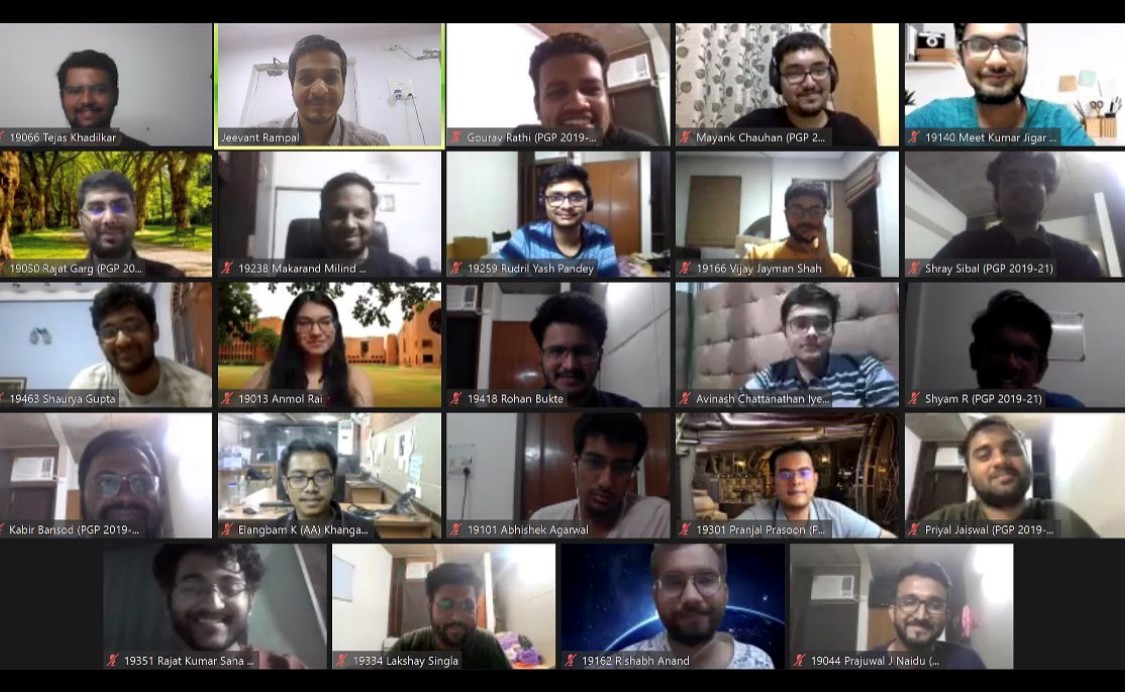The course Auctions and Market Design (previously Auctions) covers the two closely related topics in its title. While auctions allocate limited resources using money (e.g., spectrum auctions), market design deals with allocation methods that cannot use money because of ethical or legal reasons (e.g., allocating scarce kidneys among patients in need of a transplant). Insightful past student projects on non-fungible tokens, IPL, and spectrum auctions highlight the relevance of the skills developed through this course.
The stalwarts in both these areas have received the Nobel prize for Economics: Paul Milgrom and Robert Wilson (in 2020) primarily for their work in auctions, and Alvin Roth and Lloyd Shapley (in 2012) primarily for their work in market design. These awards underline the practical importance of both these topics. This course provides an intuitive theoretical description and key practical insights from both auctions and market design.
Two important aspects of the IIMA student experience - course bidding and student placements - illustrate both topics. Course allocation at IIMA is done using auctions in which students bid "artificial money" called "bid points", which they earn by completing various academic tasks. Clearly, student placements cannot use auctions. Thus, placements are governed by carefully designed rules where students' and companies' preferences are considered while allocating students to jobs.
Auctions have become increasingly important as running them has become substantially easier in an online world, and corporates and policymakers have realised auctions' potential to unlock value and provide an efficient allocation of scarce resources. Items traded in auctions include commodities like fish, flowers, and rough diamonds; financial securities like government bonds; and natural resources like mineral rights and oil leases. Since eBay's entry in 1995, billions of dollars' worth of different merchandise has been auctioned on eBay and other e-commerce websites. Development in auction theory and its empirical study have allowed auctions to become the dominant method for allocating radio spectrum, electricity, advertising space on internet search engines, etc. Indeed, governments get into trouble if they do not use auctions for allocating natural resources (e.g., the 2G spectrum and coal-block allocation cases) or if their auction design yields poor results.
Auctions are strategically complex; one's optimal strategy depends on various considerations regarding the auction design and other participants' strategies. For instance, optimal strategies are quite different if the winning bidder is made to pay their own bid, or the second-highest bid (e.g., in eBay), or if multiple related objects are sold sequentially (e.g., transponder-usage-rights sold by Sotheby's) or simultaneously (e.g., spectrum sale by most governments).
Thus, bidding in or designing auctions is challenging, and the stakes are high. The first part of this course uses auction theory and its empirical experience to offer insights into making optimal decisions as bidders or designers of auctions in key auction settings, including art, spectrum, electricity, natural resource, and bond auctions.
The second part of the course deals with market design. The central question here is: How to allocate limited resources to interested parties without using money to improve the efficiency, stability and fairness of the allocation. Money is precluded from several allocation problems because of ethical or legal reasons. For example, one cannot use money while allocating human organs among patients needing a transplant (e.g., kidney donors to patients), potential employees to jobs (e.g., new doctors and lawyers to hospitals and law firms, respectively), school children to schools, etc. In market design we also analyse policies related to repugnant and illegal markets like the markets for surrogacy, prostitution, and illegal drugs.
David Gale and Lloyd Shapley have led the way in providing algorithms to match parties that benefit from trading with each other. Alvin Roth has guided the development and application of algorithms to many real-world problems like kidney exchange and doctor-hospital matching. Real-world applications present new challenges for market design, which require appropriate modifications. For example, how should one account for a priority list among those in need of a kidney? How should one accommodate married candidates' preferences for locating nearby while taking up a new job?
As Roth argues, the desiderata for several market design problems have a common theme: markets should provide thickness, i.e., they should incentivise widespread participation from both sides in the market and reduce side deals; they must deal with the consequent congestion problem and they should be safe, i.e., participants should be able to follow low-risk and simple strategies. The market design part of the course offers insights into the workings of existing markets and into the key techniques for implementing a successful design that yields thickness, de-congestion and safety in important real-world settings.

Course-end picture for the 2020-21 iteration
The course pedagogy includes in-class live experiments to illustrate the workings of different auctions and markets and to help students practise strategizing in these settings. Finally, students apply their learning to an auction or market of their choice and make presentations. This course has been a great learning experience for me; I hope to continue this learning in the future.

Course-end picture for the 2020-21 iteration
About The Author

Prof. Jeevant Rampal
Prof. Jeevant Rampal (jeevantr@iima.ac.in) is an assistant professor in the Economics Area.